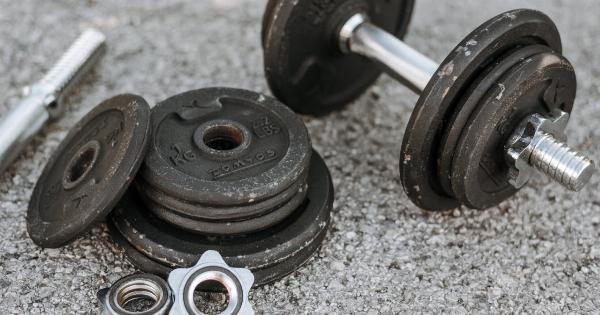Intervertebral disc herniation is a condition in which the disc between the vertebrae of the spine bulges or ruptures, leading to pain and discomfort.
People who suffer from this condition often wonder if they can lift weights and perform other exercises, or if doing so could make their condition worse.
What is Intervertebral Disc Herniation?
Before answering the question of whether you can lift weights with intervertebral disc herniation, it’s important to understand what this condition is. Intervertebral discs are cushion-like structures located between the vertebrae in the spine.
They play an important role in supporting the weight of the upper body and allowing for movement of the spine.
Intervertebral disc herniation occurs when a disc bulges or ruptures, causing the disc material to press against the nerves in the spinal cord. This can lead to symptoms such as pain, numbness, and weakness in the affected area of the body.
Can I Lift Weights with Intervertebral Disc Herniation?
The answer to this question is not a simple yes or no. It depends on several factors, including the severity of the herniation and the type of weightlifting or exercise you plan to perform.
What You Need to Know: Weightlifting with Intervertebral Disc Herniation
Here are some things to consider if you’re thinking about weightlifting or performing other exercises with intervertebral disc herniation:.
1. Consult with Your Doctor or Physical Therapist
If you have intervertebral disc herniation, it’s important to speak with your doctor or physical therapist before starting any new exercise regimen.
They can evaluate the severity of your condition and recommend exercises that are safe for you to perform.
2. Choose the Right Type of Exercise
Not all exercises or weightlifting movements are created equal when it comes to intervertebral disc herniation.
Some exercises may put more strain on your back and exacerbate your symptoms, while others may help to relieve pain and strengthen the muscles surrounding the affected area.
Gentle low-impact exercise such as walking, cycling, or swimming may be a good place to start. Resistance training, which involves using weights or resistance bands to build strength, can also be helpful.
However, it’s important to start with light weights and high repetitions, and to avoid exercises that require you to lift heavy weights overhead or perform movements that require a lot of twisting or bending of the spine.
3. Practice Good Form
Proper form is essential when lifting weights with intervertebral disc herniation. This means engaging your core muscles, keeping your back straight, and avoiding any movements that cause pain or discomfort.
It’s also important to start with lighter weights and gradually increase the weight as your strength and endurance improve.
4. Listen to Your Body
If you experience any pain or discomfort while lifting weights or performing other exercises, it’s important to stop immediately.
Pain is a sign that something is not right, and continuing to exercise through the pain can make your condition worse.
5. Focus on Strengthening the Right Muscles
When lifting weights with intervertebral disc herniation, it’s important to focus on strengthening the muscles that surround the affected area. This includes the core muscles in the abdomen and back, as well as the glutes, hips, and thighs.
Strong muscles can help support the spine and reduce the risk of future injury.
Conclusion
If you suffer from intervertebral disc herniation, it is possible to lift weights and perform other exercises.
The key is to consult with your doctor or physical therapist, choose the right type of exercise, practice good form, listen to your body, and focus on strengthening the right muscles. By taking these steps, you can stay active and potentially reduce your risk of future injury.





























